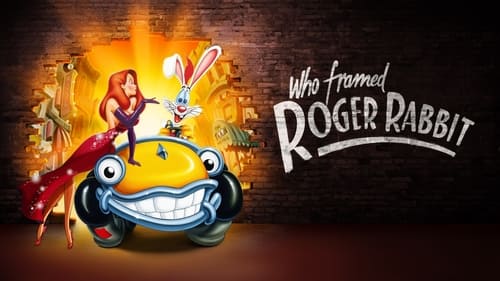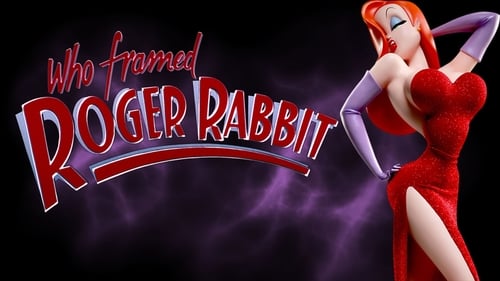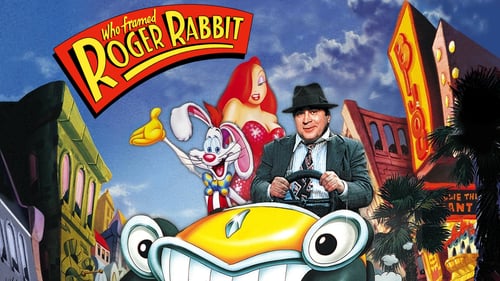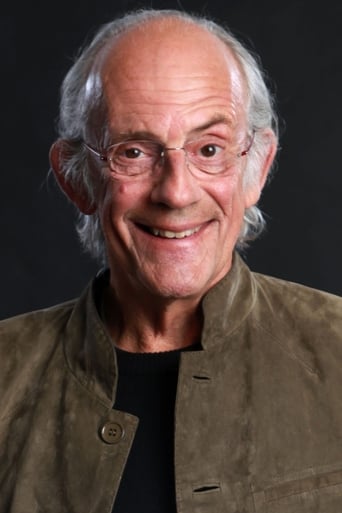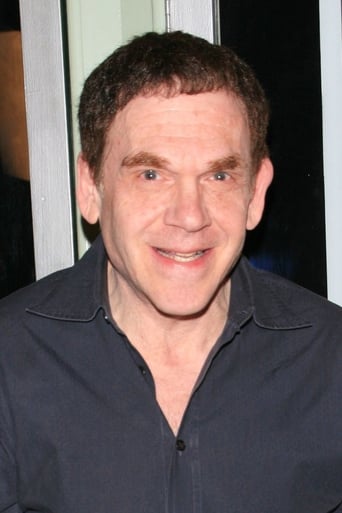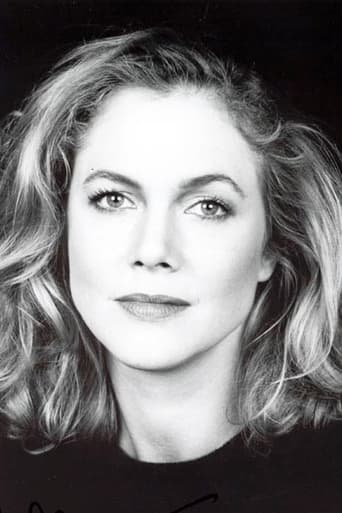Stoutor
It's not great by any means, but it's a pretty good movie that didn't leave me filled with regret for investing time in it.
Dynamixor
The performances transcend the film's tropes, grounding it in characters that feel more complete than this subgenre often produces.
ChanFamous
I wanted to like it more than I actually did... But much of the humor totally escaped me and I walked out only mildly impressed.
Sienna-Rose Mclaughlin
The movie really just wants to entertain people.
elicopperman
Over the span of 30 years, Who Framed Roger Rabbit has been lauded for its technical innovations, admirable tongue-in-cheek tribute to cartoons from the Golden Age of American Animation and classic film noir, and just being a fantastic film in every regard. What was originally a book by the name of Who Censored Roger Rabbit went through roughly seven years of development before finally reaching the big screen in the summer of 1988. Since then, the movie would become arguably one of the most influential films of all time, and would also help launch the animation renaissance of the 1990s next to The Little Mermaid and Ren & Stimpy. As for me, considering that this is my all time favorite movie, you can bet I have much to say about it.Set in Hollywood around 1947, where cartoon characters exist in the real world, cartoon star Roger Rabbit is accused of murdering owner of Toontown, Marvin Acme. This was the result of alcoholic private eye Eddie Valiant getting hired by cartoon producer R.K. Maroon to investigate adultery involving Roger's wife Jessica and Acme. Now Roger tries to get Eddie to clear his name from the villainous Judge Doom who vows to destroy him and all other toons. While that plot does sound wacky in concept, it nonetheless adds in to the film's tone, as the whole film is a passionate love letter to the style and humor of cartoons from the 1940s. The very first scene is a Roger Rabbit/Baby Herman cartoon entitled Somethin's Cookin', which is a rapidly paced homage to the zany cartoons of Tex Avery and Hanna-Barbera. Of course the other pairing of toons themselves are memorably hilarious, especially that famous Daffy Duck and Donald Duck piano duel, but the film always keeps on its toes to make sure the main story doesn't get out of focus.In terms of the film noir aspect, the general story is executed as one big crime case that has much more hidden underneath it as Eddie unravels more clues. Admittedly, the plot can be a little complicated to follow at times, mainly due to the immense amount of details once everything is revealed, although it does make much more sense upon repeat viewings. Nonetheless, the buildup further creates the necessary suspense and thrills to figure out who exactly is behind the cartoon murder case. It's with all of these elements that help recreate the original book's mystery angle while condensing it a bit to play around with the cartoony antics and fast paced comedy. It's debatable whether or not the filmmakers studied any particular film noir classics, but the film's point of view as a thriller is so well put together that it's hard to believe that wasn't the case.As for the characters, Eddie Valiant may start off grouchy, but it's through his backstory that explains his inner struggles with toons, and Bob Hoskins portrays his down-to-earth persona up to the point where one could also relate to something they love ruining their life. Charles Fleischer pulls off Roger's voice, and while some could find it annoying, he manages to carry Roger's emotions in context to the human actors astonishingly while making him delightfully amusing. Jessica Rabbit could pretty much be called the spiritual successor to Tex Avery's Red Hot Riding Hood, mainly from her bombshell design and scarlet attire, but she's also a very devoted wife to Roger, showing how sometimes a human and a rabbit being married ain't so bad after all. Lastly, Judge Doom may seem like a subdued psychopath at first, but his plan to wipe out all toons is so diabolical that his reveal sums up his whole character. While there are other fun characters like the weasels, Dolores, Benny the cab and Baby Herman, they're not quite as developed as the rest, but they do their jobs well as supporting characters. What's interesting to mention is a subtle social commentary on how the toons are depicted. Similar to the book, the toons are depicted as minorities, since real people don't really interact much with them outside of working in Hollywood, unlike that of Eddie and friends or Judge Doom and his weasels. Not to mention, the scene where Roger tells Eddie how laughter can be a very powerful thing while standing on a soap box is rather symbolic of African Americans standing up for their own rights. In fact, ToonTown is essentially a ghetto since only toons live there far off from the people of the real world. Hell, Roger stated in the film, "there's no justice for toons anymore," as if that statement was similar to how little justice there were for people of different races back then. It's when Judge Doom reveals his plans to turn ToonTown into a freeway where viewers may see the lovable toons in a completely different light. While these metaphors are more subtly played out, this really makes that legendary happy ending with all our favorite animated characters celebrating Marvin Acme's will surfacing their free rights a blessing in a way.I think Richard Williams was the perfect choice to direct the film's animation, as he and his crew managed to set up distinct rules in combining the toons with the real world. For example, when Roger crashes through R. K. Maroon's office, the hole he leaves behind looks just like him, and one scene shows Roger spitting out realistic water, not water drawn on paper. This is not only thanks to the highly talented animators, but also ILM who helped create a wonderful method of compositing the traditional animated characters into the same environments as the live actors without using advanced computers. The processes ranged from prop manipulation, to superimposing the frames on photostatic blowups, to multiple matte layers, and especially constant camera motion, showing just how painstaking the process must have been for the crew. In addition, Williams designed Roger based on features of characters born out of Warner Bros, MGM, and Disney. Considering how hard it is to make real people interacting with characters of another realm look convincing, the techniques worked so well that one could imagine the film's world being real.Of all the films that have combined live-action and animation, as well as being tributes to classic cartoons and crime thrillers, there may never be one that will even come close to topping this one. Who Framed Roger Rabbit still stands the test of time for its fantastic technical achievements, intriguing story with some hidden albeit smart depth and satire, lovable characters and charming imagination. At this point, there's no reason not to see this film again, as anybody who loves cartoons, film noir, or even highly creative movies in general will get a kick out of this now as much as the audiences of back then. And now, to end this off, time to quote the movie itself: "Things are never black as they are painted, time for you and joy to get acquainted. So make life worthwhile; come on and smile, darn ya, smile."
LeonLouisRicci
Virtually a "Stand Alone", Extravagant, Exuberant, and completely Nutzoid Movie that was, at the time, Audacious, Ambitious, and anything but the usual Stuff released Weekly by the Hollywood Big Shots.In its Initial Release it Pleased most Moviegoers, especially those old enough to have Grown Up with Disney, Warner Brothers, and the other Competing "Toon" Studios. Just about All of the Toon Characters that Appear in Cameos and Background were Popular in the Full Animation Period that lasted until about the Early Sixties when Hanna Barbara's Cheap and Flat Style took over Television and Killed the much more Expensive, but more Impressive Predecessor.Eye-Popping, Fantastic, and Frenetic, if the Film has a Fault, it may be its over Enthusiastic Inclusion of so Much in so Little Time. Much of the Frame is constantly being "Fought Over" for Screen Time by the Myriad of "Toons" Squeezing in and out of Scenes. Also, some have Problems with the Main Character, Roger Rabbit's Irritating and Grating Voice and He doesn't quite Measure Up to the Legendary Appeal of the Supporting Cast of His Animated Cousins.But maybe, He was "Just Drawn That Way". Anyway, His On Screen Wife Jessica never has that Problem and is one of the Movie's Standouts (Her Action Figure was an instant sellout) and is Infamous for early home Video freeze frames.The Film has been given its Due by Fans and Critics even after the Initial Wonder Dissipated. It may not be as Impressive Today but few Films as Groundbreaking and Innovative as this that Push the Boundaries of the Art-Form to New Levels and New Directions Rarely are. Overall, slightly Underrated but cannot be denied its Status as a Belligerent, Beautiful, and Wonderful Experiment that gave Movie Patrons a Platform for its Joyful Nostalgia, and yes, it did and does make People laugh.
powermandan
Who Framed Roger Rabbit was not the first movie to combine cartoon with real things. It was just the best movie to do so and still remains the best. Who Framed Roger Rabbit helped popularize the double usage. Yogi Bear, Smurfs, Casper, and Alvin & The Chipmunks are some of the best known movies like Roger Rabbit of recent times. The first reason Roger Rabbit surpasses those is because of the kind of animation that is used. The pure CGI stuff used in Yogi Bear and Smurfs is easy as hell in comparison with this. The 80s was when people needed to draw out cartoons by hand. I highly doubt there were 50 frames drawn by hand per-second used for the cartoons, but whatever. I saw a special feature that looked through how the actors would be communicating with the cartoons, and that was enough. Roger Rabbit provides constant asking "How do they do that?" I don't want to know anymore behind-the-scenes tricks because the magic would be lost. Who Framed Roger Rabbit is not specifically for children. Kids under the age of 9 should be accompanied by adults. There's sexual innuendo, drinking, smoking, and profanity out of youngsters' reach. Besides, adults would appreciate the work that went into it and understand the story better. This is a neo-noir, so the story is guaranteed to be complex. Bob Hoskins plays a down-on-his-luck detective named Eddie Valiant who is sent to spy on Roger Rabbit's wife Jessica who is suspected of cheating on him with the owner of Toontown. It is true and Roger is heartbroken. The next day, the man is murdered and Roger is the prime suspect. Baby Herman explains Roger is innocent and mentions the man's plans of Toontown. Soon, Valiant uncovers a deadly conspiracy of betrayal, lies, deceit and murder in which Roger and his wife are just a small piece of the puzzle.This is a truly funny movie and all characters are lovable. This uses every film noir trick in the book but adds warmth and hilarity with wonderful cartoons.
Sarah Carlton
As someone who doesn't particularly enjoy cartoons as much as I did when I was younger, it really says a lot when I look at a film like Who Framed Roger Rabbit as an adult and say that I absolutely love it. I was first introduced to WFRR when I was very young. (Probably 5 or 6 years old.) And I don't remember much from it, but what I can recall for sure is that I did enjoy it. But now that I'm grown up, I actually enjoy it even more.It's a phrase we hear all the time and more often than not, it gives us false hope that the film will be exactly as it promises: "Fun for the whole family!" they tell us. But most of the time, movies that try to sell by using this title are false advertising and end up as unmemorable failures for both young and old audiences. But you can rest easy because this is not the case with WFRR.For starters, the tone of the story itself is a masterful combination of family friendly humour and dark euphemisms that are so complex they will go right over a child's head. So adults can appreciate them without fear of their kids becoming tainted by suggestive themes. It is perfectly equated in the light as well as the dark side of humanity. And that is something that is not easily achieved by an ordinary film, much less one that is partially geared towards children.There's a whole multitude of things that I could give this film praise for. To name the best ones: there's the skillful animation, the seamless interaction of the human characters with their toon counterparts, the clever themes of a classic 1940's film noir that blend absolutely beautifully with the cartoonist nature of the story, the top-notch acting from Bob Hoskins, Christopher Lloyd and others; and last but not least, the pain-staking amount of detail made to every single interaction between man and toon. Over all, the techniques used worked to excellence and don't fail to astound even by today's standards. You can almost feel the animator's blood, sweat and tears through every great effort to convince us that these toons are real and are just as human as their living, breathing co-stars.Because I consider the film to be so nearly perfect, there is very little that I could complain about (and I don't think I could even if I tried!). Sure, there are some scenes that might come off as a tad out-landish or zany but hey...that's the nature of cartoons. And when used in combination of brilliant acting that's so faultless to the point that you constantly forget that the actors on set are interacting with things that never actually existed; it gives you a better appreciation for cartoons and 2D animation in general but also for the extremely talented cast who gave it their all to make these gimmicks a success.As a whole, the film is staggering in both technical achievement and story. It has a lot of heart to it, great humour and a wonderfully crafted script. If you're looking for a film that both fully grown adults and small children will like, this is the real deal. There's no false advertisement to be found here; you don't get any more genuine than this. Everyone should give Who Framed Roger Rabbit a watch because you won't find more fun anywhere else!



